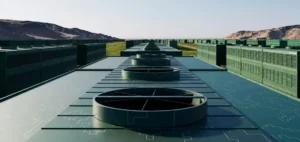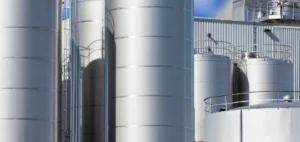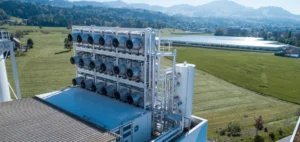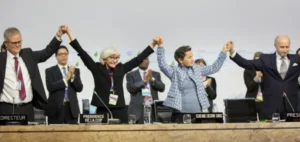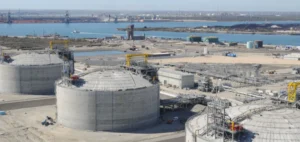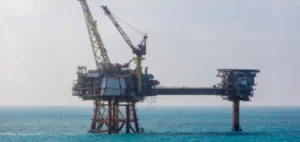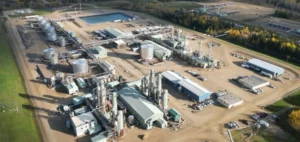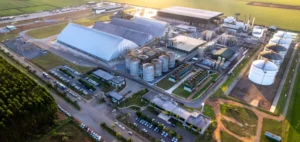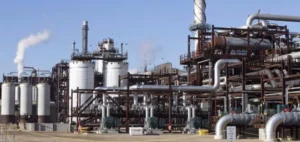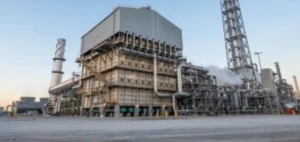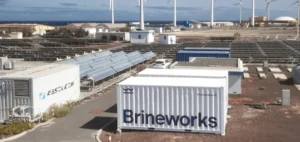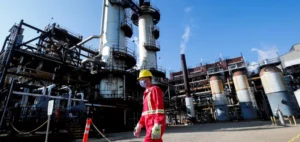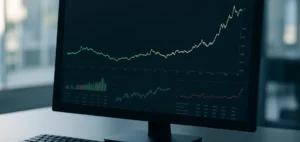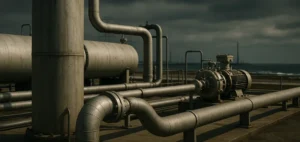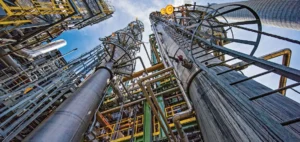Gov. Joe Biden’s administration on Thursday announced a plan to reduce CO2 emissions from gas and coal-fired power plants starting in 2030, a long-awaited step toward meeting the United States‘ climate commitments.
Among other things, these new regulations require certain coal-fired power plants to capture the majority of their CO2 emissions, instead of releasing them into the atmosphere. If implemented, these will be the first restrictions on such emissions imposed by the Environmental Protection Agency (EPA) on existing plants.
Electricity generation accounts for about a quarter of the country’s greenhouse gas emissions, the second largest sector after transportation. “In every corner of our nation, Americans are seeing and feeling the devastating effects of climate change,” EPA chief Michael Regan said Thursday in announcing the measures, which will likely be fought in court, like a previous attempt under President Obama.
They have the potential to prevent the emission of more than 600 million tons of carbon by 2042, the equivalent of the emissions from all U.S. cars in six months, according to the EPA, which assured that they would have a “negligible” impact on electricity prices. The agency relies in particular on CO2 capture and storage techniques, which are still not very widespread and costly. The government is banking on their development, after passing an Inflation Reduction Act (IRA) last year, which included increased tax credits for power plants using these techniques.
Under the new rules, coal-fired power plants that plan to continue after 2040 will have to install technologies that capture 90% of the CO2 emitted by 2030. On the other hand, no restrictions are imposed on coal-fired power plants that are retired by 2032, or even 2035 for those operating at less than 20% of their capacity. The EPA argues that the installation of these technologies will take time, and will be most cost-effective for plants operating longer.
“Action Series”
For gas-fired power plants, the largest will have to capture 90% of their CO2 by 2035, or use low-carbon hydrogen at 30% by 2032, and 96% by 2038. Michael Regan assured that these proposals were “100% in line” with the commitments of Joe Biden, who has promised carbon-neutral electricity production as early as 2035. They are “part of a series of actions,” he said.
In 2015, Barack Obama had already announced a plan to reduce CO2 emissions from power plants, which was blocked before it went into effect. Last year, the Supreme Court limited the EPA’s ability to act. According to his ruling, blanket rules, which would result in forcing a transition from coal to other energy sources, exceed the agency’s authority.
The EPA has tried to avoid this pitfall by proposing rules tailored to the type of plant, its level of use, or its closure date. These measures follow the EPA’s “traditional approach” to action under the Clean Air Act, Regan said. “We are confident that we are within those limits,” he said. The new rules are expected to be finalized in 2024, after a period of public debate.
“Turning point” or “distraction”?
They “signal that the era of unlimited power plant pollution is over,” Dan Lashof of the World Resources Institute told AFP. This is “a turning point,” agreed Julie McNamara of the Union of Concerned Scientists (UCS). However, both wanted the proposal to go further on gas-fired power plants.
Other environmental groups have also been highly critical of carbon capture and storage(CCS) technologies, which they fear will allow polluting power plants to continue, rather than switching directly to renewable energy. This is a “distraction,” tackled a Climate Justice Alliance official.
There are currently only about 35 CO2 capture and storage sites in the world for industrial processes or power generation, according to the International Energy Agency. But “pollution control technology doesn’t have to be on every corner to become the basis for a standard,” said Jay Duffy of the Clean Air Task Force.
Senate Minority Leader Mitch McConnell said the EPA was imposing “unfeasible deadlines” and “unproven technologies” that would lead to “higher electricity prices and power outages. A significant number of coal-fired power plants have already closed in the last decade.
By 2022, about 60% of U.S. electricity generation would come from gas (40%) or coal (20%) plants, according to the U.S. Energy Information Agency. The rest came from renewable energies (21.5%), and nuclear power (18%).




